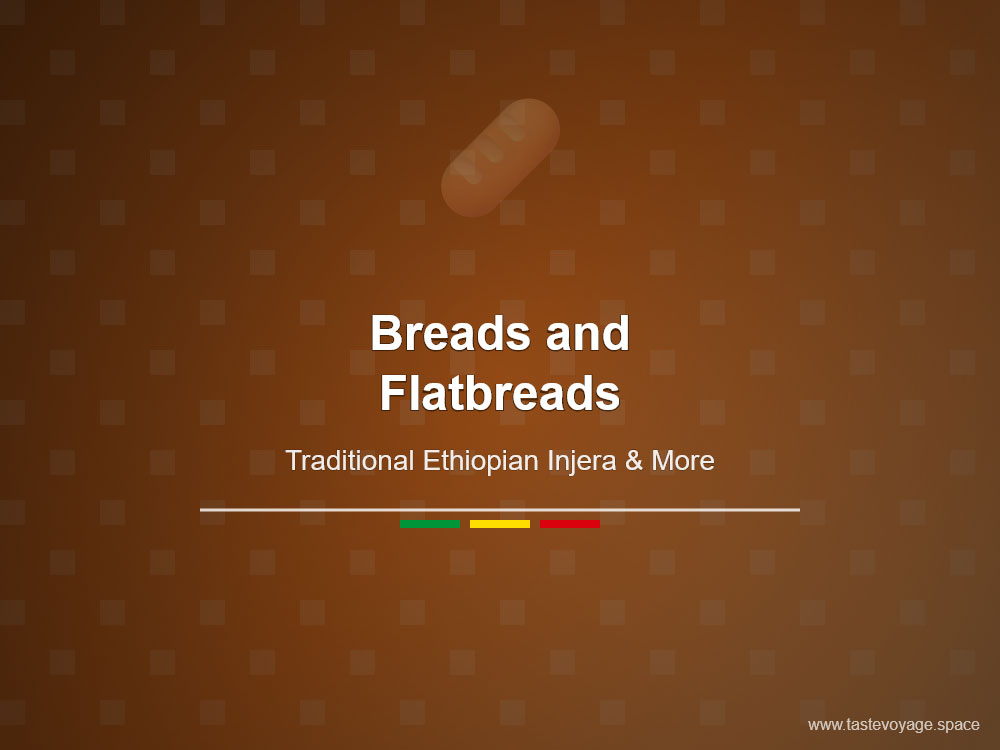Authentic Ethiopian Injera Recipe with Natural Fermentation
Travel the World Through Food >> Breads and Flatbreads>>Ethiopian Cuisine>> Authentic Ethiopian Injera Recipe with Natural Fermentation
Authentic Ethiopian Injera Recipe with Natural Fermentation
Discovering the Cultural Significance of Ethiopian Injera
Ethiopian Injera is much more than a simple dish; it is a symbol of community, tradition, and culinary artistry. This iconic flatbread has been a vital part of Ethiopian culture for generations, embodying a sense of identity and shared heritage. Its distinctive appearance and texture make it instantly recognizable, drawing food lovers worldwide into its rich cultural narrative. Injera serves as both a staple food and a communal plate, bringing families and friends together around the dining table. It reflects the Ethiopian values of hospitality, unity, and respect, making each meal an experience rooted in cultural pride.
The Unique Craft of Natural Fermentation
What truly sets Injera apart is its method of preparation, rooted in the art of natural fermentation. This traditional process involves fermenting a mixture of teff flour and water over several days, allowing natural yeasts and bacteria to develop. The fermentation not only enhances the bread’s unique tangy flavor but also boosts its nutritional value. The slow fermentation process is a testament to Ethiopian culinary patience and craftsmanship. It preserves the authenticity of the dish, connecting it to centuries-old practices passed down through generations. This natural approach also highlights Ethiopia’s deep connection to sustainable food practices, respecting the environment and promoting healthful eating.
Culinary Significance and Serving Traditions
Injera’s culinary significance extends beyond its taste. It functions as both a bread and a serving platter, often supporting an array of flavorful Stews and vegetables known as “wats.” The soft, sponge-like texture of Injera makes it perfect for scooping up these dishes, fostering a shared dining experience. Traditionally, Injera is laid out on a large communal platter, with various dishes placed on top and around it. This practice encourages sharing, conversation, and bonding among diners. Its versatility and capacity to absorb flavors make it an integral part of Ethiopian culinary traditions. The process of preparing and serving Injera reflects a cultural commitment to communal harmony and hospitality.
A Beautiful Cultural Heritage
The significance of Injera extends beyond the kitchen. It is a symbol of Ethiopian resilience and cultural pride. This dish embodies a centuries-old heritage, showcasing the country’s rich history of agriculture, craftsmanship, and social customs. For many Ethiopians, Injera is more than food—it is a cultural emblem, a way to preserve and celebrate their unique identity. Its preparation and consumption are often intertwined with rituals and celebrations, emphasizing its importance in social life.
Embracing the Tradition
In recent years, the global culinary scene has embraced Injera, appreciating its unique flavor and cultural depth. Chefs and food enthusiasts around the world are exploring its possibilities, often highlighting the natural fermentation process and its health benefits. Yet, at its heart, Injera remains a humble yet profound representation of Ethiopian culture. It invites us to explore a tradition rooted in patience, community, and respect for natural culinary processes.
Injera is much more than a dish; it is a cultural treasure that invites us to appreciate Ethiopia’s rich culinary heritage. Its natural fermentation process, shared traditions, and deep cultural significance make it a truly remarkable food. Whether enjoyed within Ethiopia or around the world, Injera celebrates the timeless beauty of communal eating and culinary craftsmanship.
